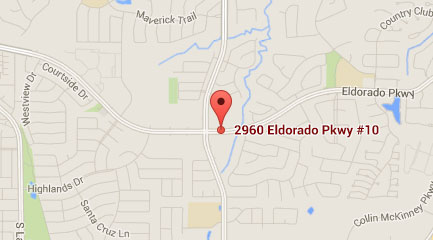Frequently Asked Questions
Q. How often should I see a dentist?
A. The American Dental Association (ADA) guidelines recommend visits to a dentist at least twice a year for a check-up and professional cleaning. Our office also recommends a minimum of two visits per year.
Q. What should I expect during my first check-up?
A. We compile your medical and dental history during your first visit. We will then examine your teeth and gums, screen you for oral cancer, make X-rays of your teeth as needed and complete a TMJ (temporomandibular or jaw joint) exam. After we review your dental profile, we will discuss a diagnosis with you. We will discuss your options for treatment and fee payment and help you determine the best plan to fit your needs.
Q. What if I have an emergency?
A. Please call our office as soon as you determine that you have a dental emergency. We will be glad to work you in to our schedule if you have a dental emergency during regular business hours. After hours, please call our office for the doctor’s emergency contact number.
Q. Are payment plans available for my dental treatment?
A. You will be given a treatment plan that will contain a breakdown of all applicable fees. Additionally, we will submit all insurance claims for you. We will fully attempt to help you receive full insurance benefits; however, you are personally responsible for your account, and we encourage you to contact us if your policy has not paid within 30 days.
Our payment options include Visa & Mastercard. In addition, we also offer interest-free financing for qualified patients through CareCredit.
Q. How are your instruments cleaned?
A. In our office, we can assure you that we’re following rigorous protocols of sterilization and infection control.
We use many items that are disposable, and we thoroughly clean reusable instruments in a state-of-the-art autoclave system. Our hand-pieces are sterilized between each patient, and we change gloves each time we get up from the dental chair. In addition to gloves, we wear masks and safety glasses. We also use hospital grade cleaners to clean each operatory.
When you visit our dental office, you can rest easy knowing that behind the scenes, we’re taking every precaution to ensure that you receive the highest quality dental care in the safest environment.
Q. Can the dentist whiten my teeth?
A. There are several methods available for bleaching the teeth: in-office, overnight or daily. One session of in-office whitening generally lasts one and a half to two hours, and you can read or relax during the treatment. For overnight bleaching, we make an impression of your teeth and create a thin flexible tray that fits your teeth. Each day you fill the tray with a small amount of whitening gel and wear for a couple of hours during the day. The overnight whitening process takes approximately two weeks.
Q. What if I have a gap in my teeth, a chipped tooth or teeth that do not respond to normal bleaching methods?
A. We have many different procedures that can help these problems. Porcelain veneers are designed to look like your natural teeth and are individually attached to the fronts of your existing teeth. Veneers can be positioned to close gaps. Bonding utilizes a composite material made of plastic to fill in areas of your teeth and correct chipping and shape problems. Both porcelain veneers and bonding are color-matched to the rest of your teeth.
Q. What kind of toothbrush should I use?
A. Adults should use a small to medium size toothbrush with extra soft to soft bristles. The head of the brush needs to be small enough to brush all areas of the mouth thoroughly, specifically the back of the mouth, which can be hard to reach. Children should use small toothbrushes with soft bristles. Many kinds of toothbrushes are available. Your dentist can help you decide which type of brush is most suitable for you.
Q. How often should I replace my toothbrush?
A. The American Dental Association recommends that you replace your brush every 3 to 4 months. With each use the bristles become worn and cleaning effectiveness decreases. Depending on your oral health, you may need to replace your brush sooner. Typically, children’s toothbrushes need to be replaced more regularly than adults.
Q. Is a powered toothbrush more effective than a manual toothbrush?
A. Generally, manual toothbrushes are just as effective as powered toothbrushes if they are used properly and for the right length of time. Children may find brushing with a powered toothbrush more exciting. If you have difficulty using a manual toothbrush, a powered toothbrush may be much more comfortable and easier to use. Regardless of what toothbrush you choose, be sure to select one you like and find easy to use.
Q. Is one type of toothpaste better than others?
A. No. However, we recommend you use toothpaste that contains fluoride, and carries the ADA Seal of Acceptance, which means it has been assessed for safety and effectiveness. Studies consistently show that fluoride helps strengthen and rebuild tooth structure, and helps prevent dental decay.
Q. How often should I floss?
A. You should floss once daily to prevent cavities from forming in between the teeth. Flossing also helps preserve the health of your gums.
Q. Should I brush or floss first?
A. As long as you brush and floss thoroughly, it does not matter if you brush then floss, or floss then brush. But flossing before brushing enables the fluoride in your toothpaste to better reach the areas between the teeth.
Q. What’s the difference between a cap and a crown?
A. A cap is the same as a crown. Both restorations are designed to restore a tooth that is severely broken, fractured, or decayed by literally covering or capping the tooth. Dentists often use the term “crowns.”
Q. What’s the difference between a partial denture and a bridge?
A. Both are used to replace missing teeth. A bridge is sometimes called a fixed partial denture. It fills a space previously occupied by a tooth. There are three main types of bridges. A fixed bridge is the most popular, and consists of a filler tooth attached to two crowns, which fit over existing teeth and hold the bridge in place.
A partial denture is removable, and typically consists of replacement teeth attached to gum-colored bases that are connected via metal framework. The denture is attached to natural teeth with either metal clasps or precision attachments, which are virtually invisible.
Q. If I get a root canal, do I need a crown?
A. Not necessarily. While most teeth do need a crown following a root canal, every tooth that needs a crown does not need root canal treatment.




